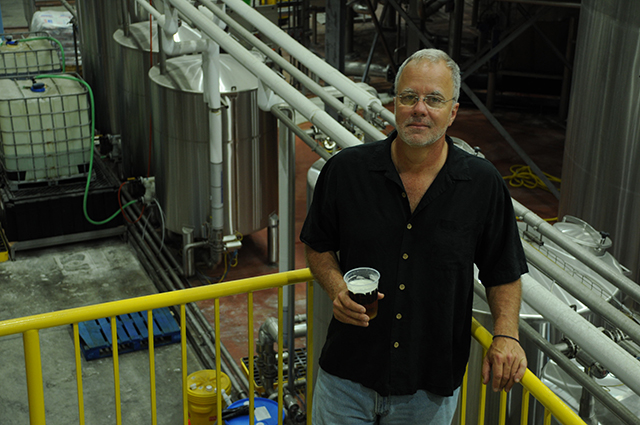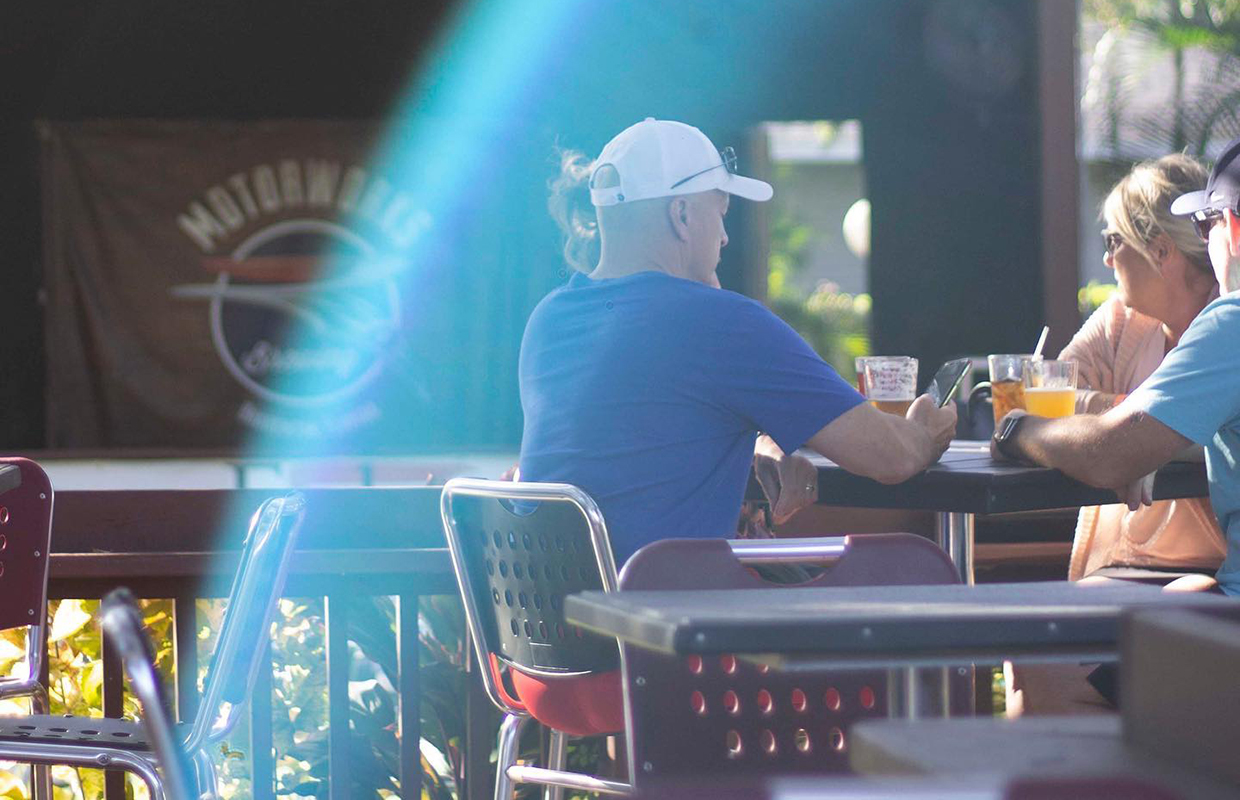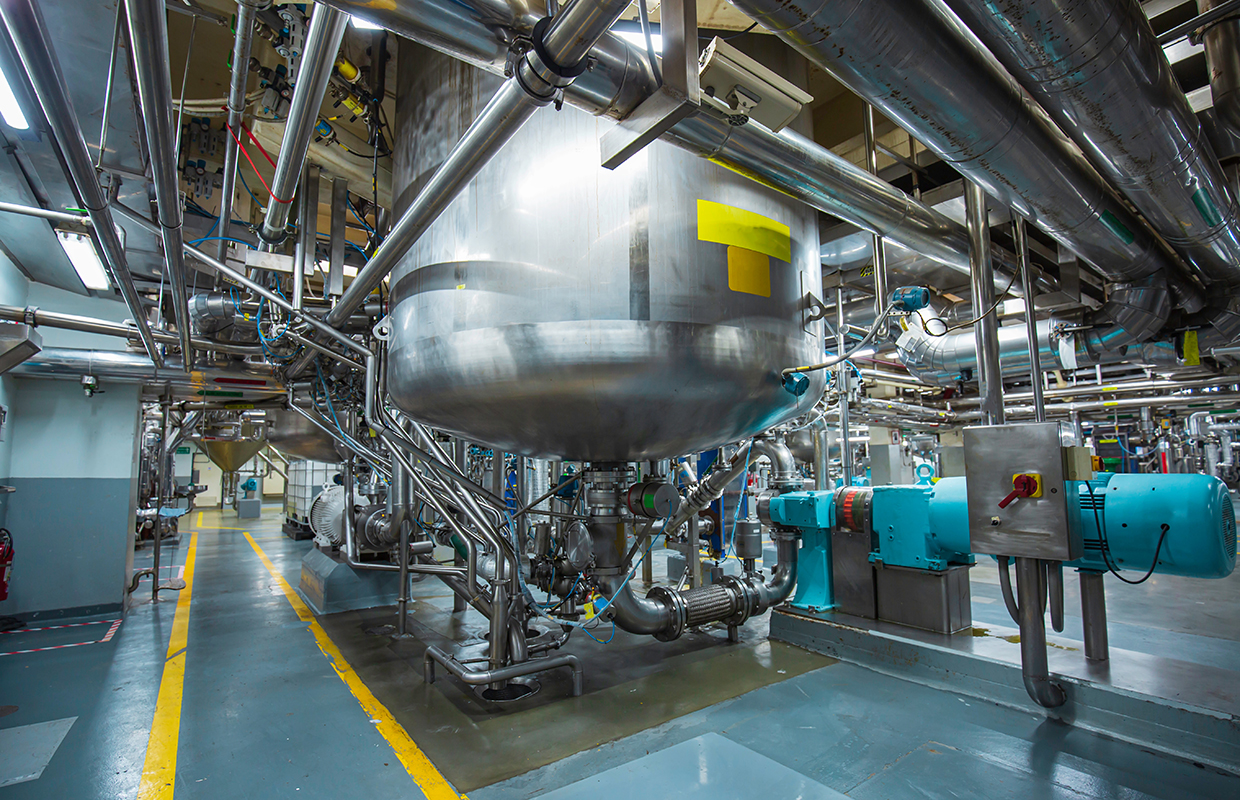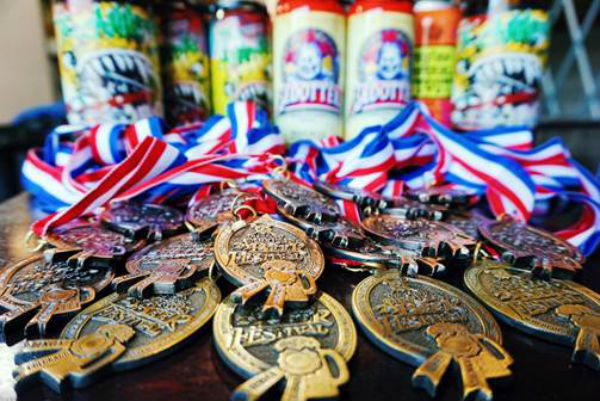
Entering Lagunitas (lah-goo.KNEE-tuss) Brewing Co. in Chicago, the company’s second location, the audio of “Pure Imagination” from Willy Wonka and the Chocolate Factory seeps into your consciousness, both figuratively and realistically. An array of colors painted on the wall and a laser light show compliment the wonderful sounds that guide you slowly down the hallway. Windows on either side allow you to glance into the magical workings of the brewery, all the while being guided by the female logo associated with Lagunitas glowing vividly at the end of the tunnel.
Although something repetitive might seem to wear on the employees, they all agree that three years in, they’re still in love with Pure Imagination. The song, playing in the entrance, is truly a precursor and launch pad for how Tony Magee, the founder and CEO of Lagunitas, feels about the company he founded in 1993.
While creating great beer — especially IPA focused great beer — is at the heart of Lagunitas, Magee knew there were two things indoubtably true — that good beer would sell, and quality branding and marketing could completely change the brewing landscape.
Additionally, Magee wanted Lagunitas to be a forward thinking company that wasn’t hung up on operating like everyone else. It was this desire that influenced Magee to adjust his flagship to the IPA in 1995, well before IPAs had become the staple of the craft beer movement.
While all this may seem simple on paper, Magee’s strategy for branding and marketing is no where close. He still handles all the design and branding on his own, as he believes in a strong focus towards typography in conveyance of brand.
That was what pushed him early on to design the logo that so many know today that strictly states “IPA”, in large block lettering. However, while Magee may have been somewhat of a visionary for the future of craft brewing in the early days, it still came at a cost.
“I’d get up at 3 o’clock in the morning, I’d do brewery stuff until 9 a.m. — I had almost a six hour day — and then I started with my other job, which was selling commercial printing,” explained Magee. “I’d do that until sometimes midnight because I’d be traveling — all the while I’d be making phone calls about the business to keep it going. It took everything from like ‘93 until ‘98. That was the five years, and then I finally went on payroll.”
For Magee that’s the price of getting over the hump of owning your own business. “You have to get past the government, you’ve got to get past your landlord, you’ve got to get past the cost of utilities and raw materials,” said Magee. “If you do, then you have a chance to survive, but it’s only a chance.
“We were in business for 13 years before we started generating sufficient positive cash flow to cover the cost of the growth and the balance sheet, which includes being able to own inventory so you can be able to get paid before you pay for it. It took everything I learned before, took everything I was learning every day. Each day was like an adult education class in business being force fed with a plunger.”
Even early on Magee wanted to stand out from the crowd. He wanted Lagunitas to have a brand that wasn’t like anything else on the market, but he also wanted to bring forth his unique and artistic personality.
It was Magee’s idea to put some random text on the very first promotional coasters. While internally he thought the sentence that he chose was pretty funny, what he also knew in his mind is that it would set a standard for the brewery’s brand, image and culture.
He worked in the printing industry for several years in a sales position, but he continually states that everything he learned about business was either in the day-to-day of Lagunitas, or his time as a musician. “Being in bands, composing, which is encoding a thing on paper that others can perform it back to you, what’s the difference between that and writing a beer recipe down,” he said. “What’s the difference between designing a label and then handing it off to printers so they can be reproduced infinitely. It’s the same as recording an album and having it pressed.
“In the world of brand, ideas of range and counterpoint and color and tonality and harmony — everything I needed to know I learned from music. Including on what to do next. You sit there with a blank piece of paper, no one’s going to tell you what to write down on it, and once you’ve written the first four or five bars, what comes in the sixth bar? You have to find a connection to your own instincts and your own insights to know reliably as you can, without a map, what to do next.”
One aspect that frustrates Magee in regards to the rapid success of the craft brewing market has been just the opposite of what he mentioned in the previous paragraph — that no one has to figure out the sixth bar. Magee said that to him, not all, but some of the brewing industry has jumped on the coattails of brewers that paved the way early on when times were tough. According to Magee there has become a lot of non-forward thinking, or original thought to move the industry forward.
While craft beer maybe the best marketing move for the brewing industry in the past 50 years, Magee said that “craft” is graduating, and he’s ready for Lagunitas to graduate. While smaller breweries are trying to hang on to craft and push larger breweries out, he’s completely fine with just stepping out of craft, although he maintains that craft wouldn’t have existed with the likes of Sierra Nevada, Samuel Adams, and even Lagunitas to a certain extent.
Craft Beer has taken a turn and a lot of larger breweries, and Magee, are starting to see the light, just like a senior in high school may see the final light at the end of the 12-year-long educational tunnel.
Magee also thinks about his business a lot like Steve Jobs, the founder of Apple Inc., thought about his. Not necessarily on the same business scale, but for Jobs and Magee, one common factor throughout was the focus on typography. “I just read somewhere, in an airport at a bookstore, something about typography is the thing that facilitates the telepathy from the mind onto a piece of paper so that it can be expressed for the next thousand years,” he said. “So, typography is one of the most fundamental things to the human experience. It’s how we remember what it is that we thought. It’s how we communicate what it is that we’re dreaming about.”
Magee learned a lot of his passion for typography from going to design school for a year before he went to music school. Almost your Jobs-esque story about dropping into a design class for fun and falling in love with typography — and it’s clear there was some focus on type when considering the first brands that made up Lagunitas.
“The art isn’t representational, the art is it’s own thing,” Magee said. “The design, and in this case typography is the message. The truth of the matter is, branding, going back to the days when a rancher put a brand on an animal so that everybody would know that mark communicated whose animal that was. Brand is how you tell people who you are. It’s the medium of communication in the world of consumer products.
“Consumers might read great things about the beer — if we’re lucky — but when they see it on the shelf that’s the only chance they get to kick the tires. I want people to understand something about us through the medium of the packaging. But brand goes beyond packaging, brand is the things you do in the world. The kinds of events you associate yourself with and the things you support with using the business.”
Lagunitas supports a wide variety of people and organizations that function in life the same way Magee and many of his employees do. They support artists and musicians, they help bands that are on tour playing more than 200 shows a year. This isn’t because it necessarily helps the brand, but because it’s what the brand believes in, which is the backbone of the brand itself.
“All of those things are part of the brand,” Magee said. “And when someone comes to the brewery for a tour, when they meet an employee at a bar and are talking, that’s all part of the brand. That’s how we tell people who we are. We always want those experiences to be good, but more than good we want them to be honest.”
Magee links the style of Lagunitas’ brand to his days of being in printing sales. He said the vast majority of print salesmen that he competed against would come in wearing specially tailored Armani suits and take their clients out to expensive lunches. “That just wasn’t me,” said Magee. “But I’ve got to find a way to thrive in this business, so I decided I would just do what I do. I would go in jeans and a nice shirt, I’d ride a motorcycle in to see my customers and I’d come in with my motorcycle helmet and my briefcase in my other hand. I’d be riding up the elevator with the other printing salesmen and they’d be looking at me like, ‘you poor son of a bitch.’
“But the thing is, when I got in there to talk to the buyers I was somebody different than they’d ever seen before. And that alone made me interesting to talk to and gave me a shot at getting the work. So when it came to brewing and doing the first label, I thought, ‘well, what am I going to reach into to find influences.’ I thought, ‘you know, I’m just going to do the first thing that comes to my mind. I’m just going to listen and find a way to get as much of my personality in this package as I could.’”
That’s why Magee went more with typography as opposed to images. He said he knew how to set up type, but had no clue how to set up a photo in Illustrator. “I knew ideas about negative and positive flow, and then I thought, I like being funny,” he said. “Humor is as fundamental to the human experience as typography is. I thought, alright, around the edge we wrote, ‘This beer is brewed in a bizarre old-world tradition. No dogs were harmed in the brewing process.’ And that was the first attempt at trying to crack a joke on the label. Once I did that and some people responded to it, I was like, this is where we’re going to live. I’m going to try and be as abstract and interesting and humorous as possible. We keep the labels so they are completely representational, rather than decorative.”
Also, once you get down to brass tacks, what really sticks about Lagunitas is the name itself. “Ah, it’s a weird word to pronounce,” said Magee. “First of all, I think initially it looks beautiful in type. Not every word looks good in type. In all caps, lowercase and uppercase, Lagunitas is just as pretty.”
But it’s not just how it looks that makes it unique. A lot of employees would say, once you speak it properly, you’re in. “There’s no end to it,” said Magee. “I thought back then that you think it’s a bad thing, but then I realized people learned to pronounce Yuengling. And when I realized people learned how to pronounce Yuengling, that might be what people like about Yuengling is that once you kind of get over that first hump of pronouncing it, now it’s something to you.”
The vision for Magee and Lagunitas hasn’t always been how big you could become, but to become the most luminous and to answer the question: what comes next?
“We chose to make an IPA our flagship in ‘95 because I felt like that was the future of craft, and turned out it’s exactly been the case,” said Magee. “We’re in a fast moving part of the stream, so the big plan is about the world. Continue doing the good work we do here in the U.S., continue to grow the business, make new friends, expand our relationships with distributors and retailers with the world. But now I want to do it in all 24 time zones.”
Magee said that Lagunitas never accepts grants from communities where it builds breweries, which will be the same case with its third brewery in Los Angeles. “We want to bring gifts to the communities we serve,” said Magee. “Not extract a toll first.”
With this next location Magee feels they will be able to reach more people with Lagunitas Brewing, which is the all-encompassing goal of the company. Magee said that a large population of their consumers are in Southern California, so it simply makes sense to build a brewery for them to help grow that market. “The reason why it’s in Los Angeles is because, Petaluma, in 18 months, if growth continues in a nice way, will be at 85 percent of capacity,” he said. “So I’m going to need more capacity on the west coast and I can’t build Petaluma out anymore. We are kind of landlocked there. We want to be right there with the people that are enjoying our beer, making it fresher and be able to invite them in the brewery, show them a nice time and be able to go out and do things with them in the community with people we are hoping to stay customers for a long time.”
For Lagunitas Brewing, where it may have once been all about growth, now it’s about bringing freshness and an opportunity to interact in new communities that may already be aggressively enjoying Lagunitas. Magee said, “People talk about it as grand ambition or vision, but the truth is it’s just like the logical next thing to do.”






Be the first to comment